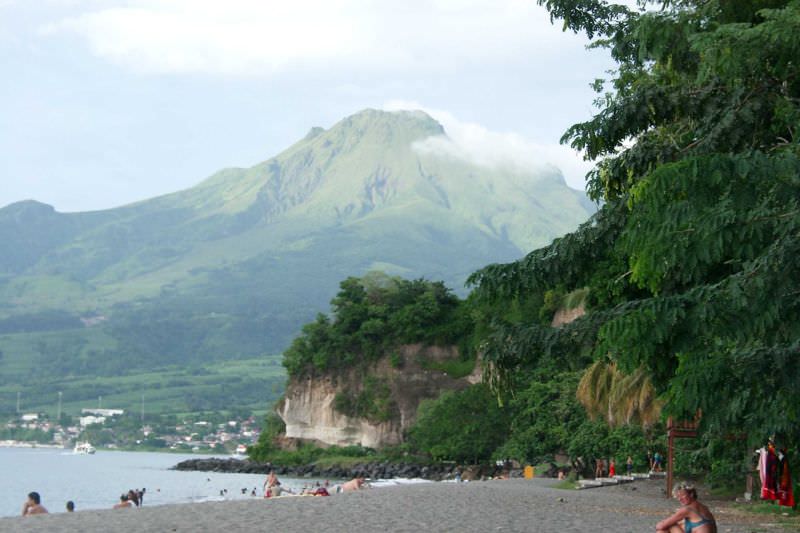[/caption]
Pelean eruptions, or Nuee Ardente eruptions occur when a large quantity of gas, dust, ash and lava fragments are blown out of a volcano’s central crater. This material falls back, and then travels down the side of the volcano at tremendous speeds – faster than 150 km/hour.
These eruptions are also known as pyroclastic flows, and they’re one of the most dangerous kinds of eruptions that volcanoes can do. Material blasted out in a Pelean eruption can tear through populated areas, killing thousands of people.
Pelean eruptions got their name from Mont Pelee, the volcano that caused tremendous destruction on Martinique, Lesser Antilles in 1902. The Pelean eruption and following pyroclastic flows killed more than 30,000 people in the worst volcanic disaster of the 20th century. The town of St. Pierre was effectively wiped off the map by a series of powerful eruptions.
We have written many articles about volcanoes for Universe Today. Here’s an article about Plinian eruptions, and here’s an article about Strombolian eruptions.
Want more resources on the Earth? Here’s a link to NASA’s Human Spaceflight page, and here’s NASA’s Visible Earth.
We have also recorded an episode of Astronomy Cast about Earth, as part of our tour through the Solar System – Episode 51: Earth.

